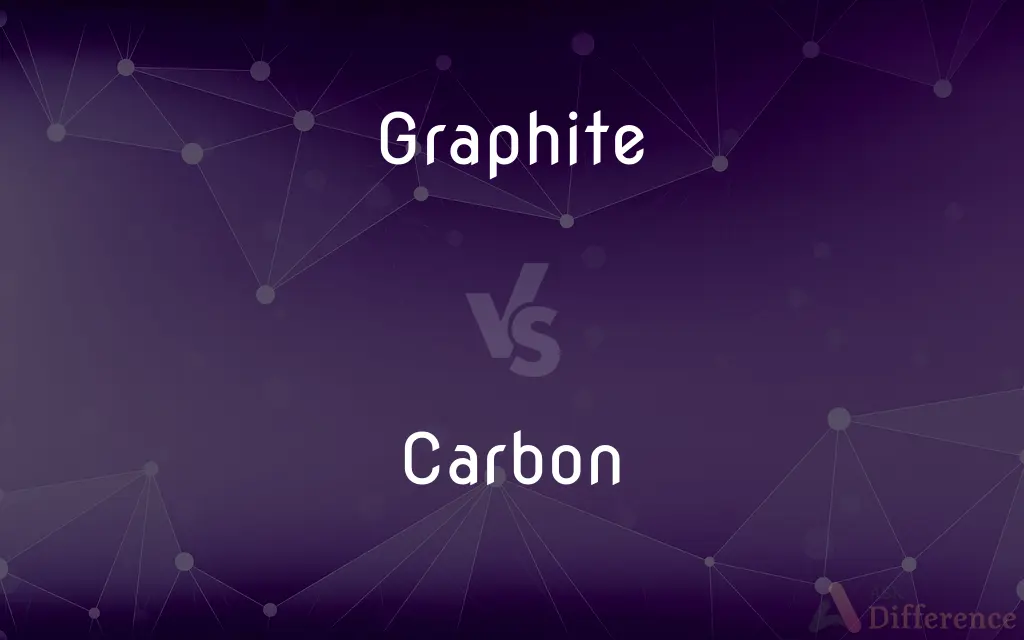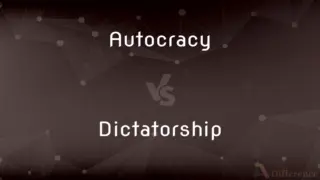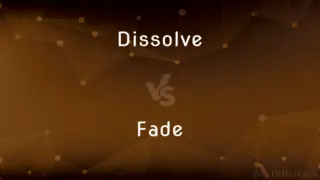Graphite vs. Carbon — What's the Difference?
By Tayyaba Rehman — Updated on November 3, 2023
Graphite is a form of carbon, specifically an allotrope with a layered, two-dimensional crystal structure. Carbon is a chemical element, found in many forms, including graphite.

Difference Between Graphite and Carbon
Table of Contents
ADVERTISEMENT
Key Differences
Graphite is an allotrope of carbon, showcasing a planar structure with a high degree of crystallinity. It is distinct in its physical properties, such as its ability to conduct electricity and serve as a lubricant due to its layered structure. Carbon, the element, is the fundamental building block for various allotropes including graphite, each exhibiting different properties due to their unique atomic arrangements.
Carbon is the chemical basis for all known life and can bond with many other elements, forming a vast number of compounds. Graphite, as one form of carbon, is primarily used in applications where its properties like high conductivity and low friction are advantageous. Both graphite and carbon are essential to modern industry, but carbon’s roles are far more diverse, extending to nearly every branch of chemistry and materials science.
Graphite's hexagonal crystalline structure imparts it with characteristics like softness and high thermal resistance. Carbon, on the other hand, is defined by its position in the periodic table, and can form diamond, another allotrope, which is the hardest natural substance. This demonstrates the versatility of carbon as an element, which can exist in very different forms like graphite and diamond.
In an industrial context, graphite is often utilized for its thermal conductivity and as a refractory material, while carbon compounds and fibers are engineered for strength and lightweight properties. Despite graphite being a form of carbon, it does not represent the full scope of carbon's presence in materials science.
Both graphite and carbon play crucial roles in technological advancements. Graphite is a preferred material in batteries and electrodes, while carbon, more broadly, forms the backbone of organic chemistry, including fuels, plastics, and pharmaceuticals. They are interconnected yet distinct, with graphite serving as a physical representation of one of the many possibilities of carbon's atomic arrangement.
ADVERTISEMENT
Comparison Chart
Form
Allotrope of carbon with a layered structure.
Elemental chemical substance (symbol C, atomic number 6).
Hardness
Soft, used in pencils.
Varies; can be very hard as diamond.
Electrical Conductivity
Good conductor due to delocalized electrons.
Conductivity varies by allotrope; diamond is an insulator.
Thermal Properties
High thermal resistance.
Varies; diamond has high thermal conductivity.
Use Cases
Lubricants, pencils, batteries.
Diverse; including fuels, diamonds, biologically significant molecules.
Compare with Definitions
Graphite
Graphite is a lubricant thanks to its layers that can slide over each other.
We used graphite to lubricate the lock.
Carbon
Carbon fibers are known for their stiffness, high tensile strength, and low weight.
The racing bike is made with a carbon fiber frame.
Graphite
Graphite is an opaque, grayish-black substance with a metallic luster and a greasy feel.
The mineral specimen is graphite, as identified by its greasy luster.
Carbon
Carbon comes in several allotropes, including diamond, graphite, and fullerenes.
Carbon's allotropes have vastly different properties.
Graphite
Graphite is a naturally occurring form of crystalline carbon used in pencils.
She sketched the portrait using graphite.
Carbon
Carbon is present in all known life forms, making it a key component of biomolecules.
Carbon dating is used to determine the age of ancient artifacts.
Graphite
Graphite is a conductive material often used in the electrodes of batteries.
The battery's efficiency is due to its graphite electrodes.
Carbon
Carbon compounds are abundant in nature, forming coal, petroleum, and natural gases.
Fossil fuels are rich in carbon deposits.
Graphite
Graphite is a carbon allotrope with a high melting point, making it suitable for refractory materials.
Graphite molds are essential in high-temperature industrial processes.
Carbon
Carbon (from Latin: carbo "coal") is a chemical element with the symbol C and atomic number 6. It is nonmetallic and tetravalent—making four electrons available to form covalent chemical bonds.
Graphite
Graphite (), archaically referred to as plumbago, is a crystalline form of the element carbon with its atoms arranged in a hexagonal structure. It occurs naturally in this form and is the most stable form of carbon under standard conditions.
Carbon
The chemical element of atomic number 6, a non-metal which has two main forms (diamond and graphite) and which also occurs in impure form in charcoal, soot, and coal.
Graphite
A soft crystalline allotrope of carbon, composed of graphene layers, having a steel-gray to black metallic luster and a greasy feel, used in lead pencils, lubricants, paints and coatings, and fabricated into a variety of forms such as molds, bricks, electrodes, crucibles, and rocket nozzles. Also called black lead, plumbago.
Carbon
Carbon dioxide or other gaseous carbon compounds released into the atmosphere, associated with climate change
Fossil fuel consumption and carbon emissions continued to rise
The level of carbon in the atmosphere has been consistently rising
Graphite
An allotrope of carbon, consisting of planes of carbon atoms arranged in hexagonal arrays with the planes stacked loosely, that is used as a dry lubricant, in "lead" pencils, and as a moderator in some nuclear reactors.
Carbon
Symbol C An abundant nonmetallic element that occurs in many inorganic and in all organic compounds, exists freely in amorphous, graphite, and diamond forms and as a constituent of coal, limestone, and petroleum, and is capable of chemical self-bonding to form an enormous number of chemically, biologically, and commercially important molecules. Other significant allotropes include fullerenes and nanotubes. Atomic number 6; atomic weight 12.011; sublimation point 3,825°C; triple point 4,489°C; specific gravity of amorphous carbon 1.8 to 2.1, of diamond 3.15 to 3.53, of graphite 1.9 to 2.3; valence 2, 3, 4. See Periodic Table.
Graphite
Short for graphite-reinforced plastic, a composite plastic made with graphite fibers noted for light weight strength and stiffness.
Modern tennis racquets are made of graphite, fibreglass and other man-made materials.
Carbon
A carbon-containing gas, notably carbon dioxide, or a collection of such gases, especially when considered as a contributor to the greenhouse effect
Plans for capturing and sequestering carbon produced by power plants.
Graphite
A grey colour, resembling graphite or the marks made with a graphite pencil.
Carbon
A sheet of carbon paper.
Graphite
(transitive) To apply graphite to.
Carbon
A carbon copy.
Graphite
Native carbon in hexagonal crystals, also foliated or granular massive, of black color and metallic luster, and so soft as to leave a trace on paper. It is used for pencils (improperly called lead pencils), for crucibles, and as a lubricator, etc. Often called plumbago or black lead.
Carbon
Either of two rods through which current flows to form an arc, as in lighting or welding.
Graphite
Used as a lubricant and as a moderator in nuclear reactors
Carbon
A carbonaceous electrode in an electric cell.
Carbon
(uncountable) The chemical element (symbol C) with an atomic number of 6. It can be found in pure form for example as graphite, a black, shiny and very soft material, or diamond, a colourless, transparent, crystalline solid and the hardest known material. Category:en:Carbon
Carbon
(countable) An atom of this element, in reference to a molecule containing it.
A methane molecule is made up of a single carbon with four hydrogens.
Carbon
A sheet of carbon paper.
Carbon
A carbon copy.
Carbon
A fossil fuel that is made of impure carbon such as coal or charcoal.
Carbon
Carbon dioxide, in the context of climate change. Category:en:Climate change
Carbon neutral
Carbon
A carbon rod or pencil used in an arc lamp.
Carbon
A plate or piece of carbon used as one of the elements of a voltaic battery.
Carbon
(informal) carbon fiber.
Carbon bike frame
Carbon
To cause (someone) to receive a carbon copy of an email message.
When I send it, I'll carbon Julia so she's aware.
Carbon
An elementary substance, not metallic in its nature, which is present in all organic compounds. Atomic weight 11.97. Symbol C. it is combustible, and forms the base of lampblack and charcoal, and enters largely into mineral coals. In its pure crystallized state it constitutes the diamond, the hardest of known substances, occuring in monometric crystals like the octahedron, etc. Another modification is graphite, or blacklead, and in this it is soft, and occurs in hexagonal prisms or tables. When united with oxygen it forms carbon dioxide, commonly called carbonic acid, or carbonic oxide, according to the proportions of the oxygen; when united with hydrogen, it forms various compounds called hydrocarbons. Compare Diamond, and Graphite.
Carbon
A carbon rod or pencil used in an arc lamp; also, a plate or piece of carbon used as one of the elements of a voltaic battery.
Carbon
A sheet of carbon paper.
Carbon
A carbon copy.
The formation of the compounds of carbon is not dependent upon the life process.
Carbon
An abundant nonmetallic tetravalent element occurring in three allotropic forms: amorphous carbon and graphite and diamond; occurs in all organic compounds
Carbon
A thin paper coated on one side with a dark waxy substance (often containing carbon); used to transfer characters from the original to an under sheet of paper
Carbon
A copy made with carbon paper
Carbon
Carbon is a nonmetallic element with the atomic number 6, foundational to organic chemistry.
Carbon chains are the basis of organic molecules.
Common Curiosities
Can graphite conduct electricity?
Yes, graphite can conduct electricity due to the movement of electrons between its layers.
Is graphite toxic?
Graphite is not considered toxic and is safe to handle.
How is graphite different from diamond?
Graphite is soft and a good electrical conductor, while diamond is hard and an electrical insulator, both are allotropes of carbon.
What are some common uses of graphite?
Graphite is used in pencils, as a lubricant, in batteries, and as a moderator in nuclear reactors.
What is carbon?
Carbon is a chemical element with the symbol C and atomic number 6, known for its ability to form a vast number of compounds.
What is graphite?
Graphite is an allotrope of carbon with a two-dimensional, hexagonal crystal structure.
Are diamonds made of carbon?
Yes, diamonds are a form of carbon known as an allotrope, with a three-dimensional crystal structure.
Can graphite be used in high-temperature conditions?
Yes, graphite remains stable and is used as a refractory material in high-temperature industrial applications.
What are carbon fibers?
Carbon fibers are long, thin strands of carbon that are strong and lightweight, often used in composite materials.
Is carbon a solid, liquid, or gas?
Carbon is most commonly found as a solid in forms like graphite and diamond, but it can also be a gas as part of compounds like carbon dioxide.
Is carbon found in all living organisms?
Yes, carbon is a fundamental component of amino acids, sugars, and other biomolecules in living organisms.
What is carbon dating?
Carbon dating is a method used to determine the age of an archaeological object containing organic material by measuring its carbon-14 content.
What role does carbon play in the environment?
Carbon is a key component of the Earth's ecosystem, cycling through the atmosphere, oceans, and living organisms.
How does graphite form in nature?
Graphite forms in nature from the metamorphism of carbon-rich materials under high pressure and temperature.
Are carbon and graphite the same thing?
No, graphite is one form of carbon; carbon itself is an element that can exist in various forms.
Share Your Discovery

Previous Comparison
Autocracy vs. Dictatorship
Next Comparison
Dissolve vs. FadeAuthor Spotlight
Written by
Tayyaba RehmanTayyaba Rehman is a distinguished writer, currently serving as a primary contributor to askdifference.com. As a researcher in semantics and etymology, Tayyaba's passion for the complexity of languages and their distinctions has found a perfect home on the platform. Tayyaba delves into the intricacies of language, distinguishing between commonly confused words and phrases, thereby providing clarity for readers worldwide.














































